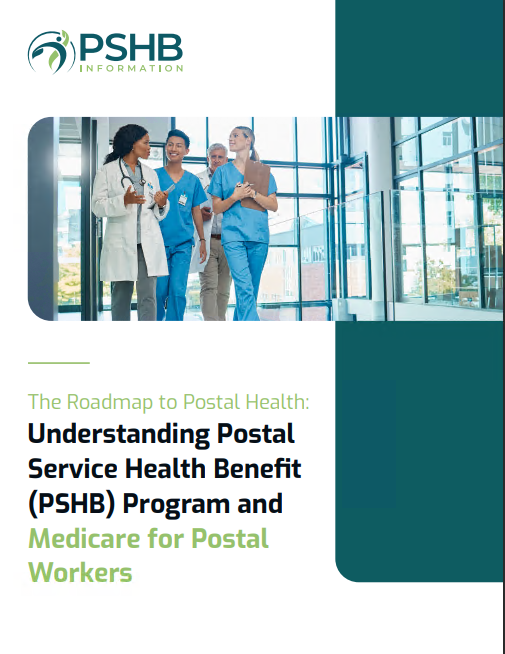Key Takeaways
-
Medicare Part A works alongside your Postal Service Health Benefits (PSHB) plan, reducing your hospital-related expenses and offering extended coverage for inpatient stays.
-
Understanding how Medicare Part A interacts with PSHB can help you maximize your benefits, avoid unexpected costs, and ensure comprehensive healthcare coverage.
How Medicare Part A Strengthens Your PSHB Hospital Coverage
If you’re enrolled in the Postal Service Health Benefits (PSHB) program, you already have solid health coverage. But when you become eligible for Medicare, particularly Medicare Part A, your hospital benefits can improve significantly. By working together, Medicare Part A and your PSHB plan can lower out-of-pocket costs and expand your coverage for hospital stays, skilled nursing facilities, and more.
Here’s how Medicare Part A enhances your hospital benefits under PSHB and what you need to know to make the most of both programs.
1. Medicare Part A Reduces Your Hospital Expenses
Medicare Part A primarily covers inpatient hospital care, and if you’ve worked at least 10 years (40 quarters), you don’t pay a monthly premium for it. This means that when you combine it with your PSHB plan, you’re essentially getting additional coverage at no extra cost.
How It Helps:
-
Lower Out-of-Pocket Costs – Medicare Part A covers a large portion of inpatient hospital expenses, meaning your PSHB plan may not have to cover as much, leading to reduced copayments or deductibles on your end.
-
Additional Days Covered – If your PSHB plan has limits on hospital stays, Medicare Part A extends that coverage, ensuring you don’t face large bills for extended inpatient stays.
-
Less Financial Stress – Knowing Medicare Part A kicks in for hospitalizations means fewer unexpected costs, giving you peace of mind during medical emergencies.
What You Should Consider:
-
Medicare Part A’s hospital deductible applies per benefit period, not annually. This means multiple hospital stays in a year could result in multiple deductibles.
-
PSHB plans vary in how they coordinate with Medicare, so review your plan details to understand cost-sharing specifics.
2. Coverage for Skilled Nursing Facilities & Home Health Care
Your PSHB plan provides a range of benefits, but Medicare Part A expands your options for skilled nursing facility (SNF) stays and home health care.
Skilled Nursing Facility (SNF) Coverage:
-
Medicare Part A covers up to 100 days in a skilled nursing facility following a hospital stay of at least three days.
-
Your PSHB plan may have different cost-sharing rules, but Medicare’s coverage can reduce how much you pay for rehabilitation and recovery care.
Home Health Care Benefits:
-
Medicare Part A covers medically necessary home health services, which include skilled nursing care, therapy, and home health aides.
-
If you require ongoing care at home, Medicare’s coverage can reduce or eliminate additional out-of-pocket expenses under your PSHB plan.
Important Considerations:
-
Medicare Part A does not cover custodial care (help with bathing, dressing, or eating) unless medically necessary.
-
Your PSHB plan may provide additional benefits beyond what Medicare Part A covers, so compare both plans for maximum benefits.
3. Coordination of Benefits: PSHB and Medicare Part A Working Together
Enrolling in Medicare Part A while keeping your PSHB plan means the two programs will coordinate benefits. This ensures you receive full coverage with minimal out-of-pocket costs.
How Coordination Works:
-
Medicare Part A pays first for hospital-related services, followed by your PSHB plan, which may cover remaining costs.
-
If your PSHB plan offers additional benefits beyond Medicare Part A, you can take advantage of those for extra coverage.
-
This coordination means fewer medical bills and greater financial security for hospital and skilled nursing care expenses.
Steps to Ensure Proper Coordination:
-
Notify Your PSHB Provider – Inform your PSHB plan that you’re enrolled in Medicare Part A so they can process claims correctly.
-
Review Your Summary of Benefits – Look at how your PSHB plan integrates with Medicare to understand potential out-of-pocket costs.
-
Ask About Out-of-Network Care – Medicare may not cover certain providers, so check with your PSHB plan about network restrictions.
4. Avoiding Coverage Gaps and Unexpected Costs
Having both PSHB and Medicare Part A offers robust coverage, but failing to understand how they work together can lead to unexpected expenses.
Common Pitfalls to Watch For:
-
Not Understanding Deductibles – Medicare Part A has a hospital deductible per benefit period, and if you’re hospitalized multiple times, you could be responsible for several deductibles.
-
Gaps in Skilled Nursing Coverage – Medicare Part A only covers 100 days in a skilled nursing facility per benefit period, with cost-sharing kicking in after day 20. Your PSHB plan may have additional costs beyond this.
-
Emergency Care Limitations – If you travel frequently, confirm that your PSHB plan and Medicare Part A cover hospital stays outside your primary coverage area.
How to Stay Protected:
-
Review Your Plan Every Year – Benefits and costs change annually, so make sure you’re getting the best possible coverage.
-
Understand Enrollment Periods – Medicare enrollment rules can affect your coverage. If you delay signing up for Medicare Part A, you may miss out on benefits that could lower your costs.
-
Consult a Licensed Agent – Agents listed on this website can help you navigate PSHB and Medicare integration, ensuring you get the best coverage for your needs.
Maximizing Your Medicare and PSHB Benefits for Hospital Care
When you qualify for Medicare Part A, combining it with your Postal Service Health Benefits (PSHB) plan can significantly improve your hospital-related coverage. From reducing out-of-pocket expenses to expanding your options for skilled nursing and home health care, Medicare Part A enhances your healthcare security.
To make the most of your benefits, review your plan details, coordinate with Medicare, and stay informed about potential costs. If you need help, reach out to a licensed agent listed on this website to explore how Medicare Part A and PSHB work together for you.









